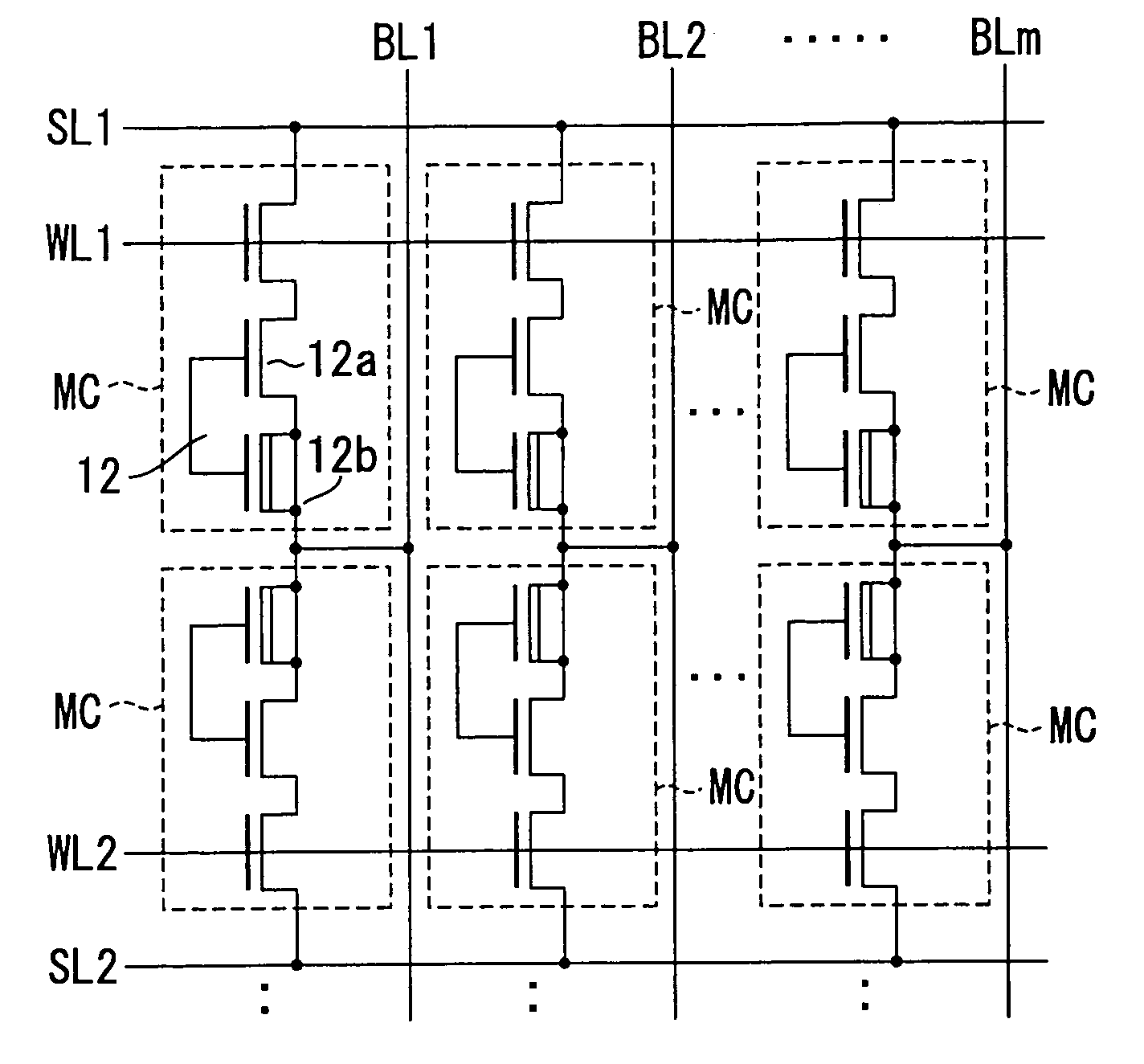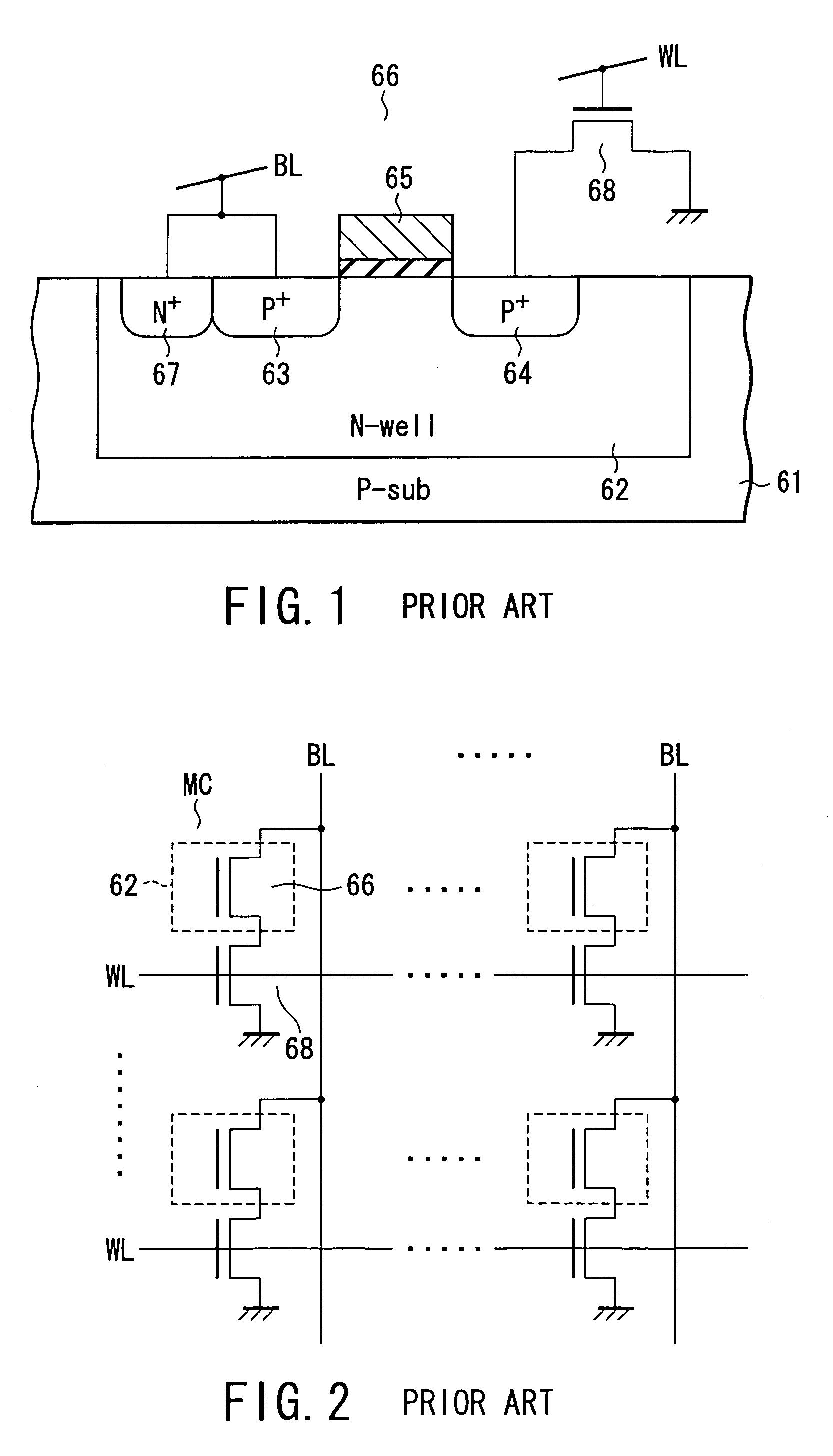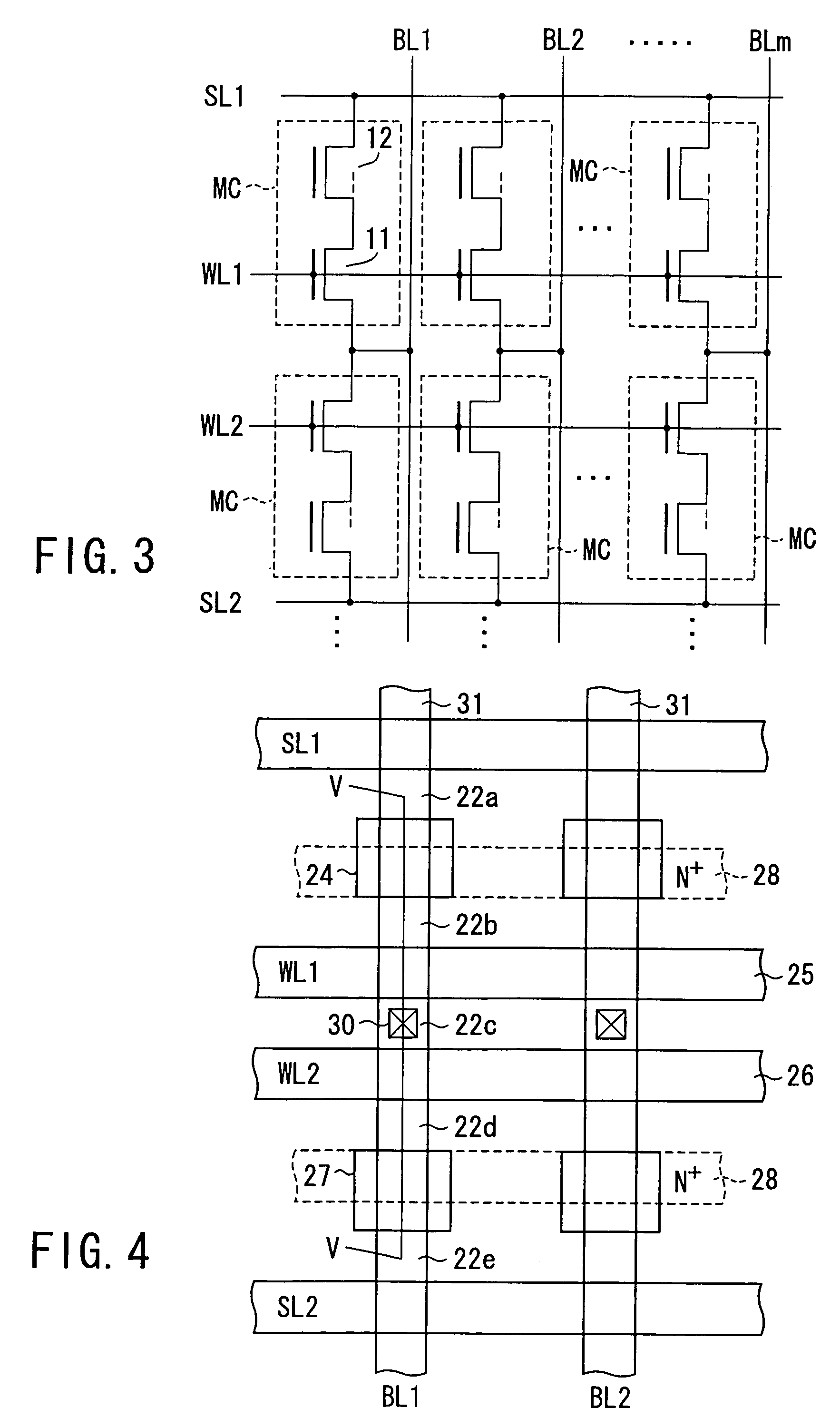Non-volatile semiconductor memory device
a non-volatile, memory device technology, applied in the direction of solid-state devices, transistors, instruments, etc., can solve the problems of non-volatile semiconductor memory devices that give rise to a large increase in the number of steps and costs, and the type of non-volatile semiconductor memory devices
- Summary
- Abstract
- Description
- Claims
- Application Information
AI Technical Summary
Benefits of technology
Problems solved by technology
Method used
Image
Examples
first embodiment
[0049]FIG. 3 is an equivalent circuit diagram which shows a configuration of part of a memory cell array of a non-volatile semiconductor memory device according to the first embodiment. As shown in it, a plurality of bit lines BL1, BL2 , . . . , BLm are arranged so as to extend in a first direction. Further, the respective pluralities of word lines and source lines are arranged so as to extend in a second direction which crosses the extension direction of the plurality of bit lines BL1, BL2 , . . . , BLm. It is to be noted that in FIG. 3, only the two word lines WL1 and WL2 and the two source lines SL1 and SL2 are shown.
[0050]At each intersection between each bit line BL and each source line SL, each memory cell MC is arranged. The memory cell MC has such a configuration that a selection transistor 11 constituted of an N-channel MOS transistor and a cell transistor 12 constituted of an N-channel MOS transistor are connected in series. A drain of the selection transistor 11 is connec...
second embodiment
[0084]FIG. 7 is an equivalent circuit diagram which shows a configuration of part of a memory cell array of a non-volatile semiconductor memory device according to a second embodiment. In the second embodiment also, as in the case of the first embodiment, the respective pluralities of bit lines, word lines, and source lines are arranged in such a configuration that a memory cell MC is placed at an intersection between each bit line BL and each source line SL. Further, each memory cell MC has such a configuration that a selection transistor 11 constituted of an N-channel MOS transistor and a cell transistor 12 constituted of an N-channel MOS transistor are connected in series.
[0085]A source region of the selection transistor 11 is connected to the corresponding source line SL (SL1 or SL2), while a gate electrode thereof is connected to the corresponding word line WL (WL1 or WL2). To a drain of the selection transistor 11 is there connected a source of the cell transistor 12. A drain ...
first modification
OF SECOND EMBODIMENT
[0115]The following will describe a first modification of the second embodiment.
[0116]FIG. 10 is a pattern plan view which shows some memory cells extracted from the memory cell array shown in FIG. 7. Components in FIG. 10 which corresponds to those in the pattern plan view of FIG. 8 are indicated by the same reference symbols and their explanation is omitted, to describe only the different components below.
[0117]The gates electrodes 24 and 27 of the cell transistor 12 have been described to each have the U-shaped plane geometry as shown in FIG. 8, in contract to which, however, in the case of the first modification, the gates 24 and 27 of the cell transistor 12 are rectangular in geometry. That is, in contrast to FIG. 8, the N+ diffusion regions 22C and 22E are omitted, so that the region where these N+ diffusion regions 22C and 22E have been present makes part of a channel region of the cell transistor 12. Further, an N+ diffusion region 28 is formed at one por...
PUM
 Login to View More
Login to View More Abstract
Description
Claims
Application Information
 Login to View More
Login to View More - R&D
- Intellectual Property
- Life Sciences
- Materials
- Tech Scout
- Unparalleled Data Quality
- Higher Quality Content
- 60% Fewer Hallucinations
Browse by: Latest US Patents, China's latest patents, Technical Efficacy Thesaurus, Application Domain, Technology Topic, Popular Technical Reports.
© 2025 PatSnap. All rights reserved.Legal|Privacy policy|Modern Slavery Act Transparency Statement|Sitemap|About US| Contact US: help@patsnap.com



